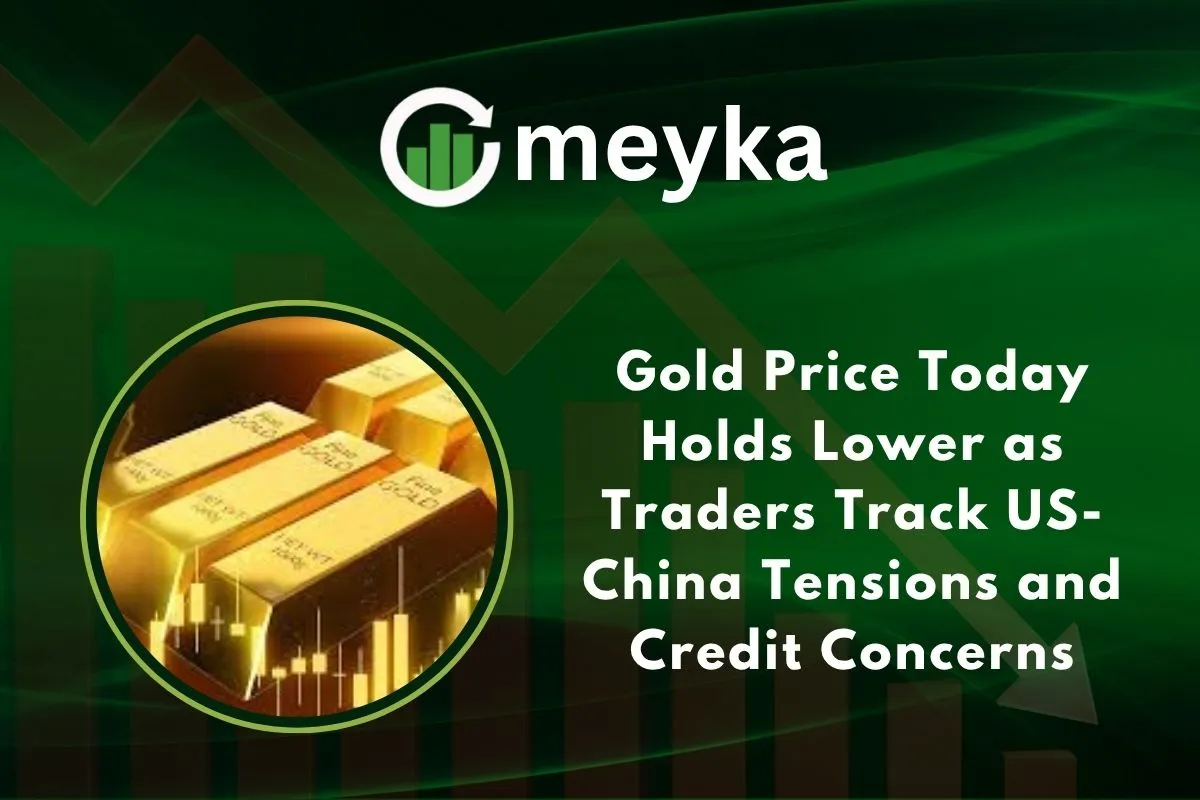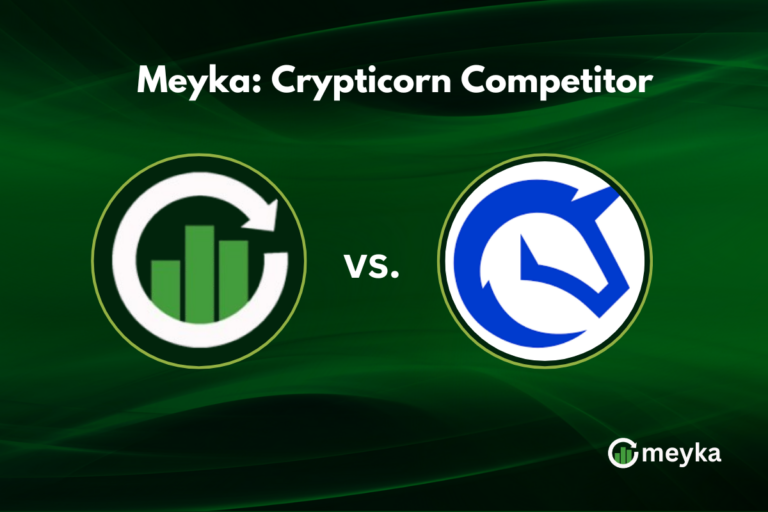Gold Price Today Holds Lower as Traders Track US-China Tensions and Credit Concerns
Gold prices are trading lower right now, even though global risks are rising. We might expect gold to rise when uncertainty grows. But this time, the story is more complex. Demand is mixed, and some traders are taking a wait-and-see approach. Two big factors are weighing on the market: escalating tensions between the U.S. and China, and growing credit concerns across major economies. At the same time, the backdrop of a strong U.S. dollar and shifting interest-rate expectations is complicating the picture. We’ll walk through the current price trend of gold, examine what’s driving it, look at regional demand, and explore what might come next for gold.
Current Gold Price Overview
As of mid-October 2025, the spot gold price reached new highs above US$4,300 per ounce, marking a gain of more than 60 % for the year. For example, one report noted gold touched a record $4,378.69/oz yet pulled back slightly after. While gold remains at very elevated levels, the recent pullback means the “holding lower” tone is not that gold is collapsing; rather, it is pausing after a rapid rise.
In domestic markets (for example, in India), gold has also set record highs. One report showed the price at ₹127,500 per 10 grams in early October. Trading volumes remain strong, and sentiment remains “cautiously bullish.” But the sharp rally earlier makes many investors cautious about entering at the top.
US-China Tensions: A Growing Risk Factor
The relationship between the United States and China is back in focus. Trade disputes, export controls (especially on technologies and rare-earth materials), and tariffs are escalating. One piece noted that “gold and silver prices rallied … amid renewed trade tensions” between the world’s top two economies. This risk is one reason gold drew so much safe-haven demand earlier.
However, the catch is this: when a risk seems to moderate (for example, by diplomatic signals), gold can give some ground. For instance, a pullback in gold followed comments that U.S. tariffs on China may not reach extreme levels. So while U.S.–China tensions are a driver, they also create swings: on a bad headline, gold jumps; on hints of easing, gold drops.
For traders and investors, this means we’re watching not just the fact of tension, but how it evolves. If relations worsen further, gold might rally again; if talks progress, we could see consolidation.
Credit Concerns and Global Economic Cues
Beyond trade, the global economy is showing signs of stress, especially in credit markets. Slowing loan growth in China, rising corporate debt, and concerns about U.S. public debt and borrowing costs are raising red flags. For example, one article pointed out that gold’s rally is underpinned by “credit quality worries in the U.S. and tensions with China”.
Credit stress builds uncertainty. When banks and borrowers are under pressure, investors seek safety. That often lifts gold. But again, if credit worries are seen as manageable, gold can lose some upside. For example, one report noted gold “recovered some ground after easing from record highs” when U.S.–China risk appeared to moderate and credit fears were still present.
We’re therefore paying attention to data like loan growth, corporate default rates, credit spreads, and debt-to-GDP trends. These help shape the “risk premium” that gold carries in uncertain times.
Dollar Strength and Interest Rate Outlook
Another major factor is the interplay of the U.S. dollar and interest rates. Gold does not pay interest or dividends, so when yields on safer assets (like U.S. Treasuries) go up, gold often looks less attractive. Also, when the dollar strengthens, gold becomes more expensive for holders of other currencies, which can dampen demand.
Right now, the market expects the Federal Reserve (Fed) to cut rates, which supports gold. For instance, Reuters reported that gold hit a record high partly because rate-cut bets and trade tensions were combining. On the other hand, if the Fed signals hesitation or the dollar rallies, gold could face pressure.
In short, we must monitor yield curves, Fed commentary, inflation data, and currency strength, all of which feed into the gold price story.
Investor Behavior and Market Sentiment
Investor sentiment has been critical in this rally. Many institutional investors and central banks are buying gold as a hedge. One analysis noted that higher central-bank purchases and strong ETF inflows helped drive gold’s climb.
Retail demand, especially in Asia, has also picked up. Physical bar and coin purchases in India and China remain strong, even though prices are at historic highs. Meanwhile, hedge funds and speculators are more cautious: some are entering, but others are sitting on the sidelines waiting for a pullback.
We’re also seeing diversification trends: investors worried about inflation, sovereign risk, and currency debasement are turning to gold. As one expert put it, gold’s rising is due or “real demand” rather than purely speculative reasons.
In short, the market is a mix of hedge demand and speculative interest. That means while upside remains, so does the risk of sharper corrections if sentiment shifts.
Regional Market Highlights
Let’s look at how different regions are behaving:
- United States & Global trading: In the U.S., gold futures are at record levels. But U.S. investors are also watching rates and the dollar closely.
- India & Asia: India shows strong demand for Gold coins/bars rather than jewelry because of the price rise and safe-haven mindset. Reuters noted that India’s gold demand during the festival season increased.
- China: With credit growth weakening, China’s role as both consumer and reserve-diversifier is interesting. Also, Chinese policy decisions affect gold via yuan strength and import demand.
- Middle East & Central banks: Many central banks continue to buy gold to diversify away from the dollar and hedge geopolitical or inflation risk.
This regional angle matters because global flows, physical demand, reserves, and jewelry buying help underpin price support.
Short-Term Outlook: Factors to Watch
What comes next for the gold price? Here are some key drivers we’ll watch in the near term:
- U.S. economic data: Inflation numbers, unemployment, PMI reports. If inflation remains elevated and job growth weakens, gold may gain.
- Fed commentary and timing of rate cuts: Markets are sensitized to even hints of delay. A pause or dovish tilt supports gold.
- U.S.–China developments: Diplomatic moves, tariffs, and rare-earth export controls. Escalation helps gold; resolution or calm may dampen momentum.
- Credit market signals: Rising defaults, bank stress, or corporate debt trouble feed gold’s safe-haven appeal. If credit fears fade, gold may pull back.
- Dollar strength and yields: A stronger dollar or higher yields tends to weigh on gold. The opposite supports it.
Given these, our forecast is that gold will likely remain volatile, with a bias toward higher levels if risks intensify, but also vulnerable to sharp retracements if good news emerges.
Long-Term Perspective
Looking further ahead, the structural case for gold remains strong. Many analysts draw comparisons to the 1970s gold boom, driven by inflation, geopolitics, cs, and de-dollarisation. One analyst observed that gold’s rally in 2025 “has soared approximately 65 %, its strongest rally since 1979.”
Major financial institutions now target higher levels, some even US$5,000 to US$6,000 per ounce by 2026. Why? Because global debt is huge, inflation risks persist, and many central banks are diversifying away from the dollar.
However, long-term investors must also remain cautious: any sharp resolution of geopolitical tensions, a strong dollar resurgence, or a return of investor confidence in stocks could challenge gold’s momentum. Gold doesn’t pay interest, so its opportunity cost rises when alternative assets become more attractive. In sum: gold has strong structural tailwinds, but that doesn’t mean it will rise in a straight line. Pullbacks, pauses, and corrections are part of the journey.
Conclusion
To wrap up, the current “holding lower” of gold prices is really a moment of consolidation after a rapid rise. While global tensions and credit concerns support the case for gold as a safe-haven asset, the market is also sensitive to signs of improvement. We from the investor community must be alert: the key drivers moving gold remain the U.S.–China dynamic, credit market health, interest-rate expectations, and currency moves. If risks increase, gold could resume strong upward momentum; if the world gets a bit calmer, gold might pause or pull back. For traders and long-term investors alike, staying tuned to these signals will be essential in navigating this complex gold price environment.
Disclaimer:
This content is for informational purposes only and is not financial advice. Always conduct your research.






